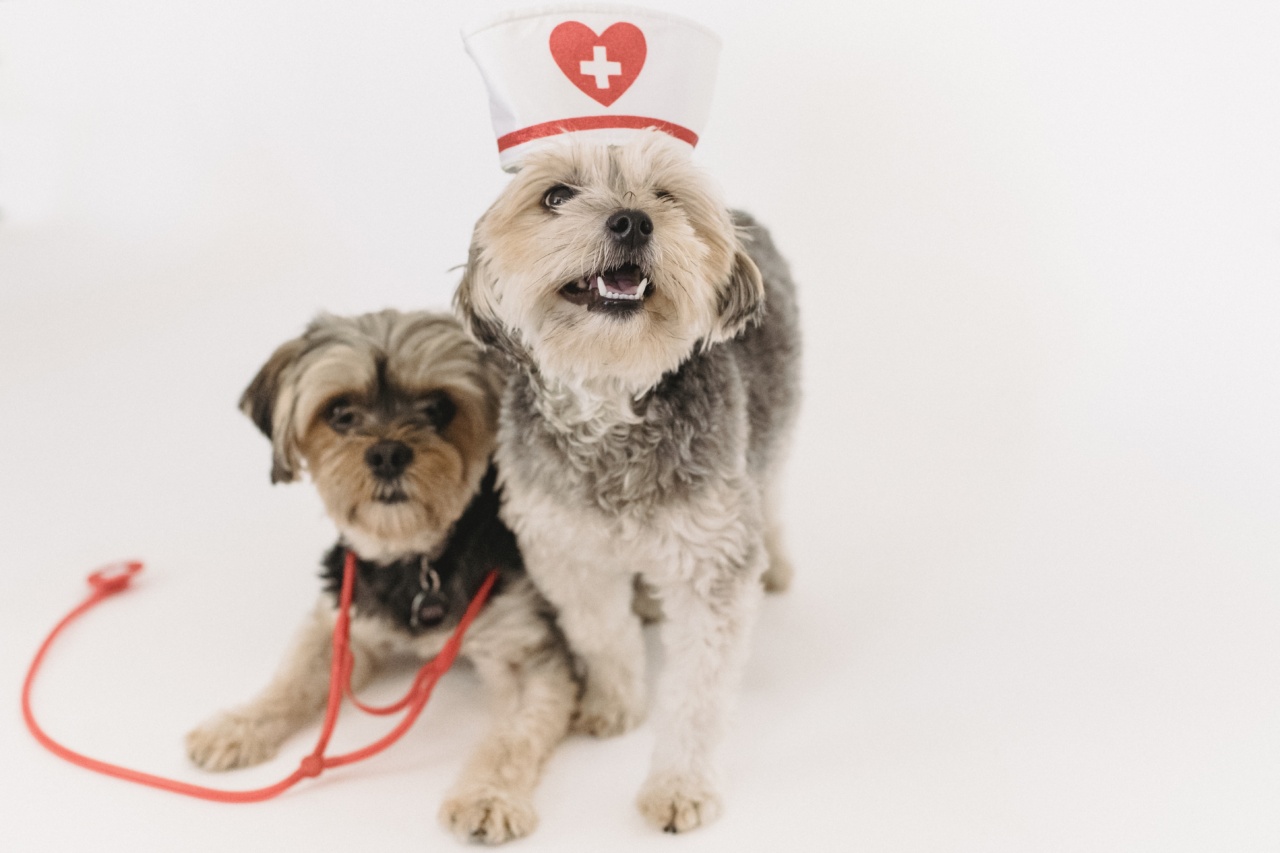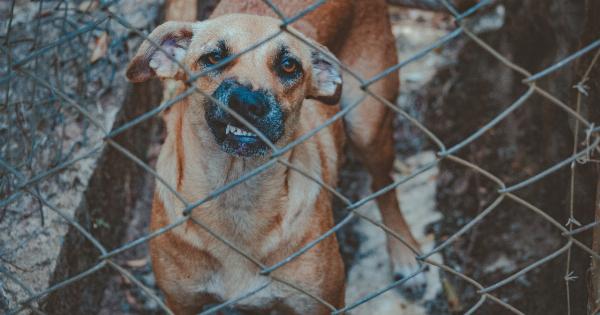As much as we love our furry friends, we can’t deny the fact that they can be just as prone to anxiety and fear as humans are. One of the most common sources of anxiety for dogs is thunderstorms.
The loud noises, bright flashes of lightning, and the overall chaos of a storm can set off a dog’s anxiety, causing them to tremble, pant, and hide. In this article, we’ll explore some common strategies for soothing a dog’s fear of thunderstorms.
Understanding Canine Anxiety
Before we dive into specific techniques for soothing a dog’s anxiety, it’s important to understand what canine anxiety is and how it functions.
Anxiety is a normal response to stress, but when it becomes excessive or chronic, it can be a problem. In dogs, anxiety can manifest in a number of ways, including:.
- Trembling or shaking
- Pacing or restlessness
- Panting or hyperventilation
- Hiding or seeking comfort
- Excessive barking or whining
- Loss of appetite
When a dog is anxious, their body releases stress hormones like cortisol and adrenaline, which can increase heart rate and blood pressure, and cause other physical symptoms like diarrhea or vomiting.
Dogs can become anxious for a variety of reasons, including separation from their owners, loud noises like fireworks or thunderstorms, or changes in their routine or environment. Understanding what triggers your dog’s anxiety can help you develop effective strategies for managing it.
Creating a Safe Space
One of the most effective ways to calm a dog’s anxiety during a thunderstorm is to create a safe space for them to retreat to. This could be a cozy corner of a room, or a crate.
The goal is to create a space where your dog feels secure and protected from the noise and chaos of the storm. Here are some tips for setting up a safe space:.
- Choose a quiet, dark area of the house where your dog won’t be disturbed
- Use familiar blankets or bedding to create a comfortable space
- Add toys or treats to help distract your dog and keep them occupied
- Consider using a thunder shirt or other type of compression garment, which can help soothe anxiety in dogs
Once you’ve set up a safe space for your dog, encourage them to spend time there during non-storm times so that it becomes a familiar, comforting place. When a storm hits, lead your dog to the safe space and let them settle in.
You can also consider staying in the room with your dog to provide comfort.
Playing Soothing Sounds
Another approach to calming a dog’s anxiety during a thunderstorm is to play soothing sounds. You can use a white noise machine, a calming nature soundtrack, or music designed for dogs.
The idea is to provide a consistent, calming background noise that can help soothe your dog’s anxiety. Here are some tips for playing soothing sounds:.
- Experiment with different types of sounds to find what works best for your dog
- Start playing the sounds before the storm hits to help your dog associate them with calmness
- Keep the volume at a reasonable level to avoid overwhelming your dog
- Consider using a portable speaker so that your dog can hear the sounds no matter where they are in the house
Playing soothing sounds can be especially helpful for dogs who become anxious during storms because of the loud noise. The calming sounds can help distract your dog and provide a sense of security.
Using Calming Supplements or Medications
For some dogs, creating a safe space and playing soothing sounds may not be enough to calm their anxiety during a thunderstorm. In these cases, you may want to consider using calming supplements or medications.
There are a variety of products available that can help soothe anxiety in dogs, including:.
- Herbal supplements like chamomile, valerian root, or passionflower
- Over-the-counter calming aids like Adaptil or Zylkene
- Prescription medications like benzodiazepines or antidepressants
Before using any calming supplement or medication, it’s important to consult with your veterinarian to make sure it’s safe for your dog and won’t interact with any other medications they may be taking.
Additionally, you should always follow the recommended dosage and monitor your dog carefully for any adverse reactions.
Desensitizing Your Dog
Another approach to managing your dog’s anxiety during thunderstorms is to desensitize them to the triggers. This involves exposing your dog to the sound of thunder in a controlled, safe way, gradually increasing the volume over time.
The goal is to help your dog learn that thunderstorms are not a threat, and to break the association between the sound of thunder and their anxiety response. Here are some tips for desensitizing your dog:.
- Start by playing thunderstorm sounds at a low volume while your dog is in a calm state
- Gradually increase the volume over several weeks or months
- Pair the sound of thunder with positive experiences, like treats or playtime, to help your dog form positive associations
- Be patient and go at your dog’s pace
Desensitizing your dog to thunderstorms can be a lengthy process, but it can be an effective way to manage their anxiety in the long-term.
However, it’s important to note that desensitization may not be effective for all dogs, and is best done under the guidance of a professional dog trainer or behaviorist.
Conclusion
Thunderstorms can be a source of intense anxiety for dogs, but there are a variety of strategies you can use to help calm their fears.
By creating a safe space, playing soothing sounds, using calming supplements or medications, or desensitizing your dog to the triggers, you can help your dog feel more secure and comfortable during thunderstorms. If your dog’s anxiety is severe or interfering with their quality of life, it’s important to consult with your veterinarian or a professional dog trainer to develop a customized plan for managing their anxiety.

























